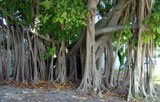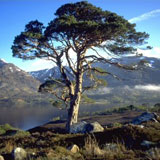Quiet Crow Bonsai
A Collection of Stellar Bonsai MusingsArticles
The Care and Raising of Bonsai
Three Considerations – Roots, Trunk, Branches
First, the roots. The foundation and strength of the tree starts at the roots. Bonsai culture differs tremendously from growing trees in the ground. Everyone is looking for the magic “soil recipe”. What is needed is: a soil that is free draining oxygenated and retains moisture. These requirements are not met using nursery “potting soil”, good bonsai soil combines the right amount of organic matter (nutrients and moisture retention) and inorganic components (which provide for good drainage and root development).
Second, the trunk and the way it's formed. In the case of a solitary tree, it’s especially important as to how the trunk emerges from the roots and the rising taper that it develops. How it transports food and energy between roots and leaves. After many years the aged characteristics and bark appear and you can sense the added character and personality of each tree.
One would think watering is a simple task, but in raising bonsai nothing can be further from the truth. Watering is probably the most complex component of nurturing our trees. Basic watering can is described as the effects of watering and rain and, what to do on holidays. As a guideline, watering occurs daily, sometimes twice a day during the summer months. Fertilizing bonsai is also important since it grows in such limited soil. Feeding your trees or providing them with the appropriate nourishment for them to be healthy and thrive. Too little and our trees are under nourished and will put on a sickly appearance, too much results in all kinds of problems, including death. Fertilizing your bonsai is critical, the application and what to apply will vary with the seasons and whether the tree is under development or a mature tree.
Third, the branches, these face the sky and are balanced and must have sunlight to flourish. Because branches and leaves are growing strongly, feeding the roots, beautiful flowers can bloom. Even though growing vigorously and flowers are blooming, you must not be complacent and must be very diligent in the care of your bonsai. This care is important. Make sure your tree is placed in an area where it gets six hours of direct light exposure daily. Some trees, depending on the species, can suffer from too much shade. Simply put, many conifers and hardwood trees have to be in full sunlight most of the day to survive.
Next Steps
After you have cared for your bonsai and have used these basic tips for properly caring for the tree, you will probably get interested in shaping, training and pruning to transform your young tree into a work of art. Re-potting and trimming also helps to keep the tree beautiful by keeping it miniature. The bonsai journey is a long one, and full of rewards. It will take you at least two years to learn the basic skills required. Your mind set after that period will have changed. If you are able to resist (very difficult) creating “bonsai” overnight, your rewards will be tenfold; there will be plenty of time in the future to learn and apply advanced skills and techniques. The following is a short list of reading for anyone serious in practicing bonsai:
- Bonsai It’s Art, Science, History and Philosophy by by Deborah Koreshoff
- Bonsai techniques Vol I by John Yoshio Naka
- Bonsai techniques Vol II by John Yoshio Naka
- The Japanes Art of Miniature Trees and Landscapes by Yuji Yoshimura
Our next look for properly caring for bonsai will be Re-Potting Additives. Read More


